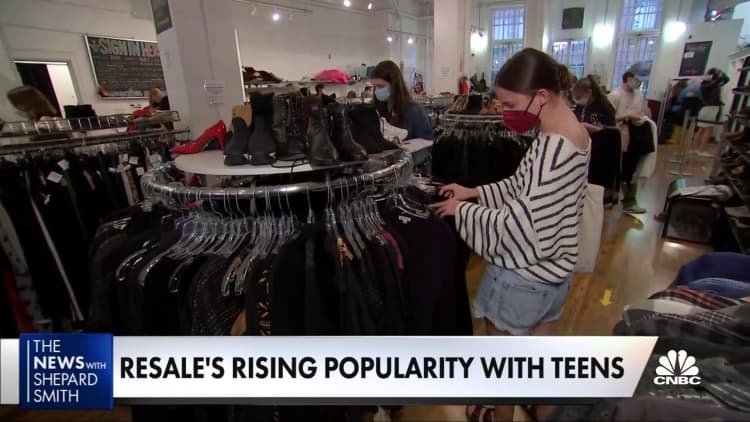Bargain hunting is certainly not new.But with the Covid pandemic came a surge in "thrifting," or buying and selling pre-owned goods.At first, some fam

Bargain hunting is certainly not new.
But with the Covid pandemic came a surge in “thrifting,” or buying and selling pre-owned goods.
At first, some families under financial pressure looked to secondhand shopping as a way to save. Then it became mainstream.
More from Personal Finance:
66% of workers are worse off financially than a year ago
Consumers prioritize Netflix, Amazon Prime over groceries, gas
These steps can help you tackle stressful credit card debt
So called recommerce grew nearly 15% in 2021 — twice as fast as the broader retail market and notching the highest rate of growth in history for the industry, according to a 2022 recommerce report by OfferUp.
While dominated by clothing resale, 82% of Americans, or 272 million people, buy or sell secondhand products, OfferUp found, including electronics, furniture, home goods and sporting equipment, as well as apparel.
Over the next five years, recommerce is projected to grow by 80% and hit $289 billion.
Resale shoppers save money, score exclusive items
To be sure, most consumers are motivated by value. Thrift store shoppers save nearly $150 a month, or $1,760 a year, on average, by buying secondhand items, according to a report by CouponFollow.
Saving money, however, is not the only driver, CouponFollow found. Shoppers have also turned to resale for other reasons, as well, such as sustainability and as a means to secure hard-to-find luxury items.
Because it is considered eco-friendly, it’s also become more socially acceptable, said Brett Heffes, CEO of Winmark, the franchisor of stores like Plato’s Closet, Once Upon a Child and Play It Again Sports.
“When I started in this business, there was a stigma around purchasing previously owned items, and that stigma is gone.”

In fact, sometimes buying secondhand is the only way to score a limited-edition pair of Air Jordans or other highly coveted and exclusive items.
Part of the momentum fueling resale is the desire to gain access to that unique item, added Wells Fargo managing director Adam Davis, who works with recommerce retail businesses, whether that’s “a Chanel handbag or Nike sneakers” — even if you end up paying more than the original retail price.
‘Affluent consumers are leading the recommerce revolution’
Much of the growth has been driven by younger shoppers, particularly teenagers, Heffes said. “We sell a lot of sneakers.”
Increasingly, however, “affluent consumers are leading the recommerce revolution,” said Chris Richter, CEO of recommerce site FloorFound.
Largely driven by value and a desire to shop in more sustainable ways, “shoppers are looking to purchase resale instead of new,” Richter said.
High-income consumers are even more likely to shop secondhand, according to a poll of more than 1,000 adults by FloorFound: Nearly 9 in 10 shoppers making more than $175,000 a year have previously bought a resale item — 14 percentage points higher than the survey average.
Subscribe to CNBC on YouTube.
www.cnbc.com
